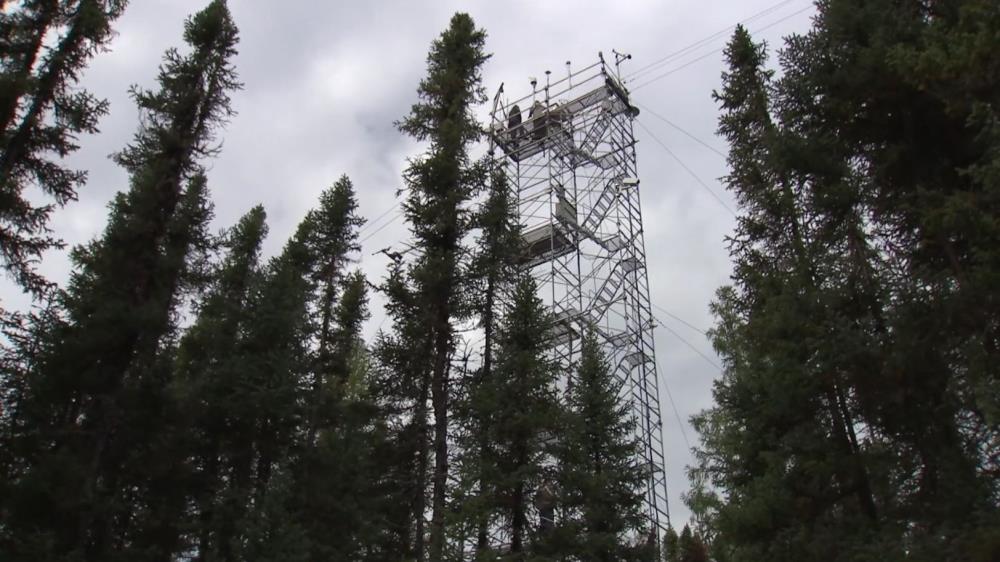
Related items loading ...
Section 1: Publication
Publication Type
Journal Article
Authorship
Stralberg, D., Arsenault, D., Baltzer, J. L., Barber, Q. E., Bayne, E. M., Boulanger, Y., Brown, C. D., Cooke, H. A., Devito, K., Edwards, J., Estevo, C. A., Flynn, N., Frelich, L. E., Hogg, E. H., Johnston, M., Logan, T., Matsuoka, S. M., Moore, P., Morelli, T. L., Morissette, J. L., Nelson, E. A., Nenzén, H., Nielsen, S. E., Parisien, M.-A., Pedlar, J. H., Price, D. T., Schmiegelow, F. K. A., Slattery, S. M., Sonnentag, O., Thompson, D. K., & Whitman, E.
Title
Climate change refugia in boreal North America: what, where, and for how long?
Year
2020
Publication Outlet
Frontiers in Ecology and the Environment, 18(5), 261-270
DOI
ISBN
ISSN
Citation
Stralberg, D., Arsenault, D., Baltzer, J. L., Barber, Q. E., Bayne, E. M., Boulanger, Y., Brown, C. D., Cooke, H. A., Devito, K., Edwards, J., Estevo, C. A., Flynn, N., Frelich, L. E., Hogg, E. H., Johnston, M., Logan, T., Matsuoka, S. M., Moore, P., Morelli, T. L., Morissette, J. L., Nelson, E. A., Nenzén, H., Nielsen, S. E., Parisien, M.-A., Pedlar, J. H., Price, D. T., Schmiegelow, F. K. A., Slattery, S. M., Sonnentag, O., Thompson, D. K., & Whitman, E. (2020). Climate change refugia in boreal North America: what, where, and for how long?. Frontiers in Ecology and the Environment, 18(5), 261-270.
https://doi.org/10.1002/fee.2188
Abstract
The vast boreal biome plays an important role in the global carbon cycle but is experiencing particularly rapid climate warming, threatening the integrity of valued ecosystems and their component species. We developed a framework and taxonomy to identify climate-change refugia potential in the North American boreal region, summarizing current knowledge regarding mechanisms, geographic distribution, and landscape indicators. While “terrain-mediated” refugia will mostly be limited to coastal and mountain regions, the ecological inertia (resistance to external fluctuations) contained in some boreal ecosystems may provide more extensive buffering against climate change, resulting in “ecosystem-protected” refugia. A notable example is boreal peatlands, which can retain high surface soil moisture and water tables even in the face of drought. Refugia from wildfire are also especially important in the boreal region, which is characterized by active disturbance regimes. Our framework will help identify areas of high refugia potential, and inform ecosystem management and conservation planning in light of climate change.
In a nutshell:
-Major climate-induced changes are anticipated for the ecosystems and biota of the large and diverse North American boreal region
-To guide conservation and management in boreal ecosystems, scientists and resource managers must identify areas that can serve as refugia from climate change
-Boreal mountain regions offer more opportunities to shelter species in microclimates within complex terrain as compared with flat, interior regions
-Some boreal forest elements, such as peat-forming wetlands, are naturally buffered from climate change by internal processes
-We developed a framework and taxonomy for identifying, characterizing, and mapping boreal refugia
Plain Language Summary


 GWFNet
GWFNet Master
Master Research
Research Map
Map
 Advanced
Advanced . . .
. . .

 Metadata Editor
Metadata Editor
 Record List
Record List
 Alias List Editor
Alias List Editor
 Legacy sites
Legacy sites